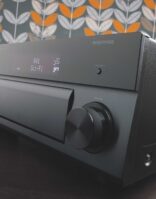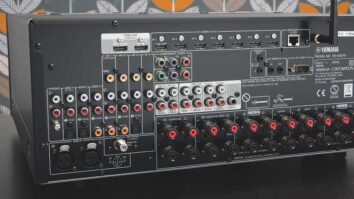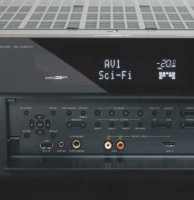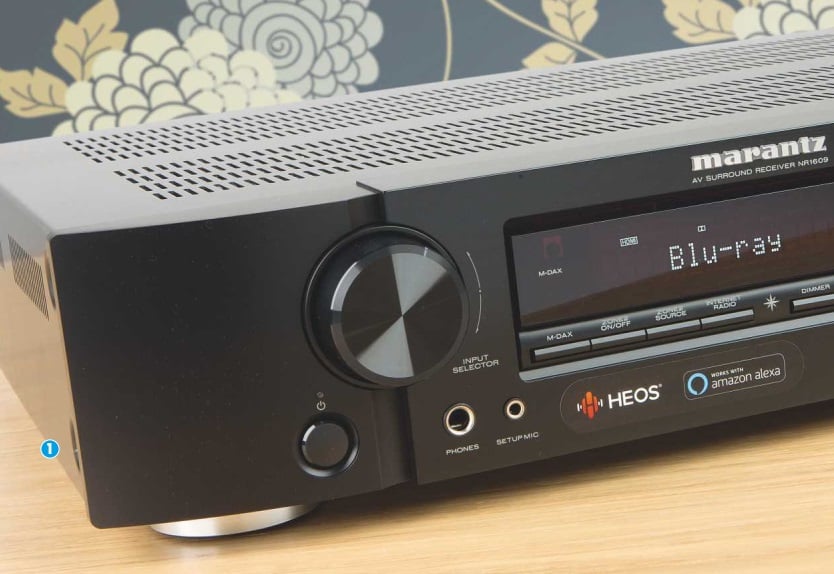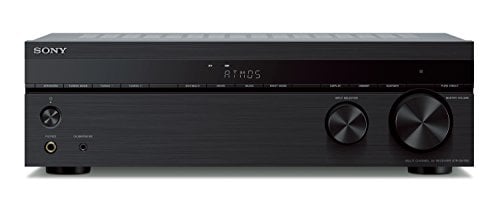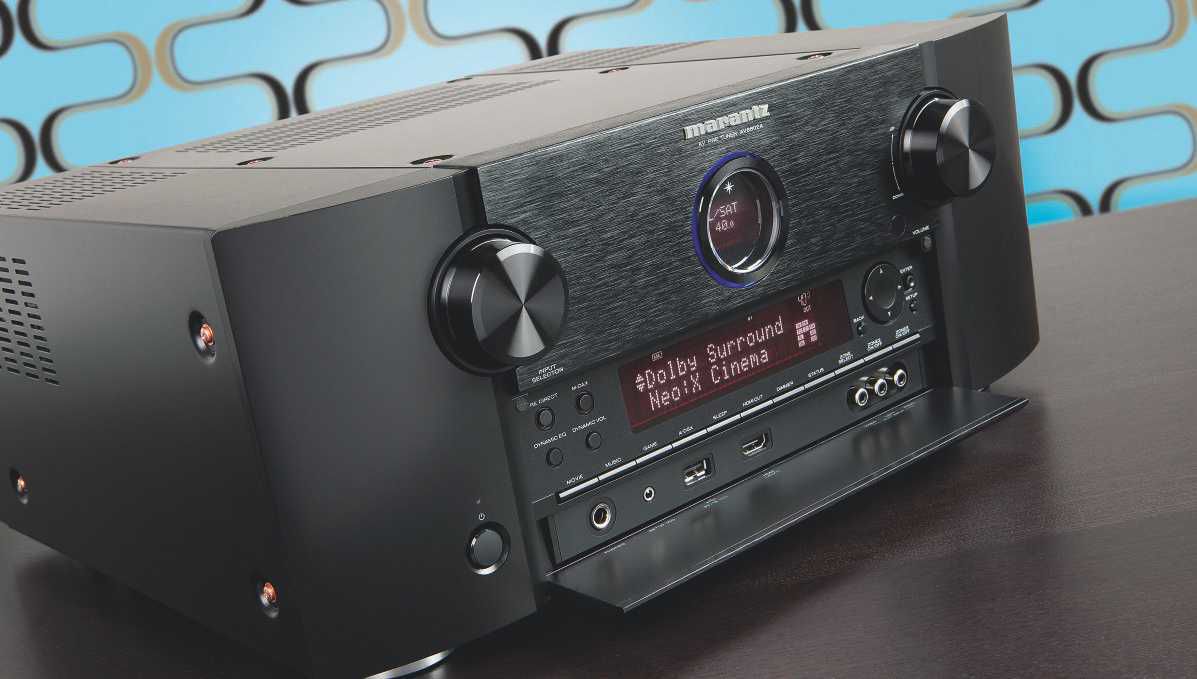YAMAHA RX-A3070 Review – Bursting with AV energy
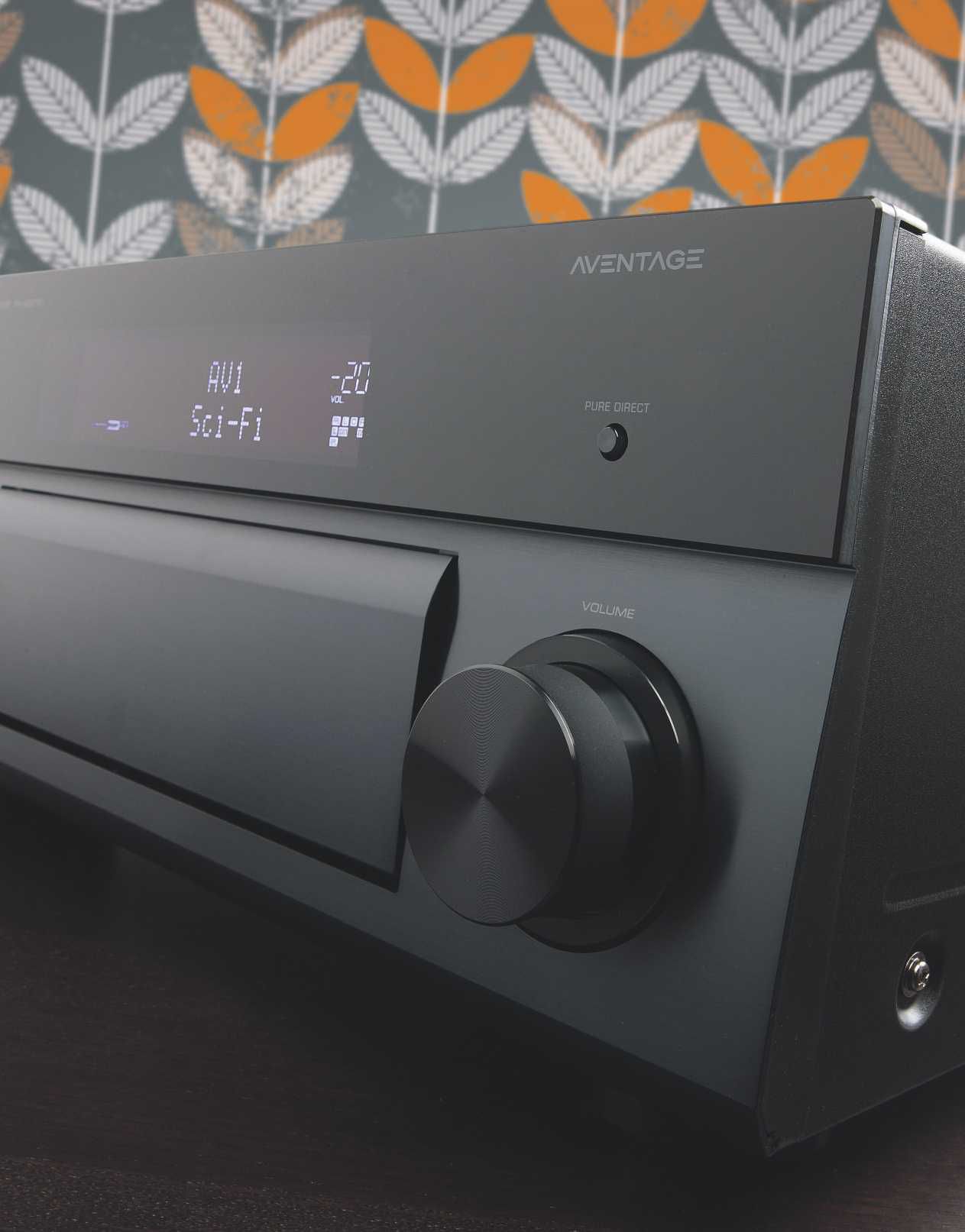
Richard Stevenson finds out if Yamaha’s top-flight AVR is ready to fend off the 11-channel competition. Read our YAMAHA RX-A3070 Review.
Table of Contents
Yamaha’s Aventage RX-A3070 AV receiver has recently been reduced to a very appealing, almost two-thirds the price of its RX-A3060 forebear – and less than half the price of Denon’s flagship AVC-X8500H. It ticks plenty of the must-have feature boxes, including multiroom, is compatible with the expected audio and video formats, and appears to be exceptional value.
However, I must have auditioned too many 11-channel models recently as even before I opened the box there was a momentary sigh. The cardboard carton proudly boasts the AVR supports next-gen object-based audio formats, yet also reveals it to be a 9.2-channel design.
So, if you want to run a 7.2.4 system (which the RX- A3070 can process) you will need an additional external power amplifier. They are not cheap, add to the box and cabling count, and are unlikely to have the same sonic signature as the onboard amps.
I had the same ‘issue’ with the RX-A3060. An 11-channel setup is by no means a necessity (and Yamaha’s solution on the RX-A3070 is to include Virtual Presence Speakers so you can at least enjoy ‘faux’ 7.2.4 entertainment), but it would be preferable if Yamaha added two extra power amps on its next flagship AVR, if only to keep up with its competitors and cater to (nearly) all end users.
Still, if you are happy with nine channels of grunt, there is a lot to salute here. The power claim is a healthy 150W per channel into 8 ohms (20Hz- 20kHz); there is decoding for Dolby Atmos and DTS:X (if not Auro-3D); and Yamaha’s DSP modes are among the best in the business. It’s fully networked, and offers a class leading four-zone multiroom setup.
The A.R.T. of design
Build quality is stellar, too, with an attractive aluminium fascia and a chunky drop-down flap that feel likely to resist all but the most serious of AVR abuse. Underneath is a fifth foot to support the weighty chassis; this, in a maelstrom of marketing, Yamaha refers to as an Anti Resonance Technology (A.R.T.) Wedge. It is said to improve sound by dampening vibrations from the transformer, transistors and heat sinks, as well as suppressing airborne vibrations, such as potent LFE explosions.
The remote control feels rather feeble and plasticky, however. It’s very lightweight and the legends are so microscopically small even those with decent eyesight will be searching for reading glasses. Yamaha’s AV Controller app is a whole lot prettier, especially the DSP mode page with its full-colour pictorial icons. Who would have thought the ‘Church in Freiburg’ has blue stained-glass windows?
Aventage advantage
As an Aventage series product, the RX-A3070’s hi-fi audio credentials are top-notch. There are ESS’s well-regarded audiophile Sabre Pro DACs for the main seven channels, an H-shape cross-member design in the chassis to reduce vibration, and balanced XLR stereo inputs for your key two-channel source.
On the digital audio side, the receiver will decode high-resolution formats up to DSD 5.6MHz and the feature set includes Yamaha’s slightly misnamed High Resolution Music Enhancer. This actually upconverts lossless CD-quality material, such as FLAC files, to double their sampling frequency to, says Yamaha, ‘further heighten the musicality of the original content.’ Several audiophile stereo DACs do the same thing, so there might just be something in it.
At the other end of the audio resolution spectrum is Yamaha’s Compressed Music Restorer. This works well to put a bit of sparkle back into lo-fi MP3 material.
There is one feature the RX-A3070 can boast that even the mighty Denon AVC-X8500H
- The RX-A3070 is also available in silver
- A refresh of Yamaha’s handset would be welcome
cannot; a proper terrestrial radio. Not only do you get a real FM tuner, you get DAB and DAB+ too. If networked radio and streaming is more your thing, Yamaha has those bases covered with a suite that includes Spotify, Napster, Tidal, Deezer, Quobuz and AirPlay.
As for video, the RX-A3070 is no less impressive given its relatively affordable price tag. There is 4K/60p and BT.2020 passthrough for your premium video sources (with compatibility for Dolby Vision, HDR10 and HLG formats) and 4K upscaling for anything else. All eight of its HDMI inputs – one found behind the receiver’s front flap, where’s there’s also a handy USB port – are HDCP 2.2-compliant. Which is just as it should be.
Measure for measure
Naturally, the RX-A3070 comes with automated EQ and setup. Yamaha’s YPAO system here is the full 64-bit version using multi-point and multi-angle measurement
to EQ the sound on a three-dimensional basis. The measurement system itself is a good notch above anything Audyssey has in the domestic AV space at present – yet actually configuring and using the RX-A3070 feels somewhat behind the curve.
Yamaha’s GUI has not changed for quite some time and feels disappointingly dated. It’s not overly pretty and lacks the little explanatory sentences you get on more cutting-edge GUIs. As such, when asked if you would like to switch bafflingly bespoke features on or off, you must refer to the manual (on the supplied CD) to find out what they do. Many users confronted with ‘Adaptive DSP Control’ will feel the need to resort to a rummage through the digital paperwork.
The good news is that the RX-A3070 is supplied with a 3D microphone stand to help measure speaker heights and angles. If your AVR can measure where your speakers are, theoretically you don’t need to start setup proceedings by telling it what speaker configuration you are using.
Out of the box, this receiver defaulted to a basic single-zone setup and the auto-configuration system sent test tones and measured a 7.2.4 system, because that is what I had wired into the speaker terminals. That resulted in a room map of where my 7.2.4 speakers were; their heights, angles, sizes and levels.
The thing is, the RX-A3070 still only has nine channels of power to play with; I could hear relays switching the power amps to different speaker outputs to measure the connected 7.2.4 array. This full-system measuring is useful for when you want to switch between different layouts, though, as the Yamaha will have already done its EQ groundwork.
There were some anomalies in the measurements themselves. The YPAO system ignored my LFE channels and fell over when I deliberately reversed front and rear height speakers and swapped around left and right on one of those speaker sets too. The RX-A3070 glossed over those errors completely, showing a set of results that said all was fine and dandy. That didn’t give me a lot of faith in its erudite room-tuning abilities, although the sonic results were difficult to dislike.
It’s hammer time
This receiver powers out movies with a gutsy balance and energy that reminds me of the sound of Denon’s older AVRs before it started to aim for a little more refinement. Bass effects are tight, taut and slam hard. Action movies are delivered with blistering pace and the sound is upscale even in a vanilla 7.1 ‘straight’ setup. The opening sequence to Thor: Ragnarok (Ultra HD Blu-ray) works well, Chris Hemsworth’s distinct timbre neatly executed through the stark, comedy dialogue.
The RX-A3070 really comes alive as the battle ensues and Led Zeppelin’s Immigrant Song is pulled to the fore of the sonic action. Worthy of its top-of-the-range status, this is a large sound with plenty of power – and with it oodles of sheer entertainment value. Each impact of Thor’s mighty hammer becomes an epic cinematic moment via my dual subwoofer system as Robert Plant wails away in the background.
Yet there is not the sheer space in the soundstage or the crystal-clear effects that other AVRs can muster. When the going gets tough, with a dragon chasing Thor through the flaming sky, the audio is big and boisterous with the fun factor turned up to 11. But the Yamaha creates more of a ‘wall of sound’, rather than a three-dimensional vista with distinct effects in every object-based audio corner of the room. It was the same with the Dolby Atmos mix on Luc Besson’s Lucy (Blu-ray). It was good, but the sound never really exceeded the sum of its nine-channel parts.
Testing the RX-A3070 with a raft of material from Atmos 4K discs to broadcast terrestrial TV, it remains a very impressive beast for the money. What it lacks in pure resolution, it makes up for in energy.
With simpler material it excels, crafting an engaging soundmix with sit-coms and intense dramas alike. Dialogue handling is particularly impressive; it’s rich and accurate, with famous names rendered immediately obvious by the voice alone. This predilection for less complex material makes it very appealing with most two-channel music.
Pop, jazz and blues compositions come across punchy and engaging, even if high-tempo rock and metal sounds like it is dancing in its own sonic mosh.
Switching between some of the Yamaha’s many DSP modes has a profound effect on the sound, both sublime and howling. As with the RX-A3060, the Sci-Fi movie mode allowed the sound to expand in almost every direction, making for a much bigger, more spacious presentation. There are none of the phasey anomalies old-school DSP modes would create and I started to shift towards using the Sci-Fi movie mode as a default.
The flip side is the aural carnage of some of the venue-based DSP modes. I played Sir Simon Rattle’s Dolby Digital 5.1 recording of The Magic Flute (DVD) using the ‘Hall in Vienna’ option and found myself wondering if all those famous Austrian composers weren’t completely deaf [one of them was – Ed].
A bargain, but…
Those modes are easily avoided and you do have to keep reminding yourself of the RX-A3070’s cost. By flagship AVR standards it’s a bargain, and it gives away only a few features and watts to peers at even twice its price.
The nine-channel configuration, YPAO room measurement niggles, dated user interface and handset buttons that make me squint are starting to count against it irrespective of price, though. For the action movie enthusiast there is little to complain about here in sonic terms but I never found the RX-A3070 the greatest at resolving detailed effects. This makes for a rather compact soundstage by current standards.
- Connections and speaker terminals are spread out nicely on the AVR’s rear panel
- The front flap hides inputs and on-body control options
Verdict
Specifications
|
Features
YPAO 64-bit sound optimisation; enhanced Cinema DSP HD3; FM & DAB+ tuner; ESS Sabre Pro DACs; XLR stereo input; hi-res audio support; Wi-Fi; Ethernet; USB; Bluetooth; Apple AirPlay; Yamaha MusicCast (multiroom); Android and iOS control apps; HDCP 2.2 on all HDMIs; High Resolution Music Enhancer; Compressed Music Restorer; Aventage design; headphone output
PARTNER WITH
LEGENDS OF JAZZ: SHOWCASE:
A fine Blu-ray to have in your library, albeit now 12 years old. This marries exhilarating live performances with a cracking Dolby TrueHD presentation that gives Yamaha’s AVR a chance to show off its drive and vigour.
